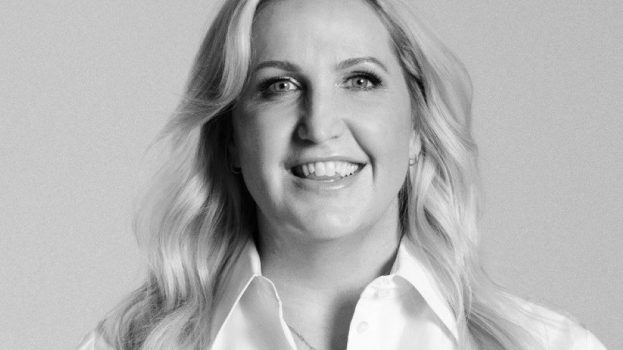There’s no place like home, and after 35 years of making Toronto a friendlier place for cinephiles, TIFF finally has a red carpet-worthy address to call its own – no ruby slippers required.
The Toronto International Film Festival has always taken over downtown Toronto the way the Lions dominate Cannes, and invaded the rest of Canada via non-stop media coverage of every film gala, star spotting and red-carpet gown. Now, launched just in time for this year’s festival in September, the $140-million TIFF Bell Lightbox permanently takes up an entire city block at Toronto’s King and John streets – home to five cinemas, two galleries, three learning studios, a retail space, a bistro, a restaurant and a lounge, as well as the organization’s new office space.
It’s the crowning achievement for a Canadian brand that’s blown past the competition since its inception as the Festival of Festivals in 1976, joining Cannes as one of the most important film festivals in the world and generating an annual economic impact of $170 million. And it’s quite a change for an organization best known for hosting a week and a half’s worth of events in rented cinemas, hotels and swanky Yorkville bars.
“Actually creating physical space, announcing ourselves as a physical entity, is really important,” says Piers Handling, CEO and director, TIFF. “Prior to this we were an ephemeral organization – a 10-day festival that rented most of its infrastructure. Once the festival was over, you couldn’t find us,”
Although TIFF has hosted year-round activities for 20 years – ranging from the Sprockets children’s film fest to Cinematheque screenings at the Art Gallery of Ontario – the new building will give this programming a central hub and increase the organization’s visibility. It’s a bricks-and-mortar continuation of the 2009 rebranding that saw the introduction of a new lowercase logo, as well as a shift to using “TIFF” as the master brand for everything the organization does.
“To many people, TIFF means the Toronto International Film Festival,” says Howard Kerbel, VP, marketing. “Our job now is to promote the fact that TIFF is an organization that offers many different things…With the advent of TIFF Bell Lightbox, the need for marketing is now daily or weekly.”
It’s a far cry from the festival’s modest beginnings. When Bill Marshall, Henk van der Kolk and Dusty Cohl launched the Festival of Festivals, their vision was to bring together the best films from around the world (including Canada). That first year, the official film schedule was a single page long, the marketing budget was non-existent and members of the media were, as Handling puts it, “quietly antagonist.”
Although not yet part of the organization, Handling was among the 35,000 attendees who gathered that first year for 127 films from 30 countries. (As a point of comparison: this year, TIFF screened 339 films from 59 countries, and though 2010 attendance numbers weren’t available at press time, last year’s festival attracted 500,000.) He remembers a palpable excitement among the crowd.
“You felt that it was going to work,” he says. “It was an idea that Toronto was ready for.”
In addition to filling a local niche, the festival managed to befriend both international and Hollywood filmmakers after a few years, bringing Jean-Luc Godard to town for a 1980 retrospective of his work and feting Martin Scorsese with a 1982 celebration that also attracted Robert De Niro. As it built industry cred, the festival’s September timing helped it become a launch platform for Oscar season, while its geography made it attractive to filmmakers from around the world who came to network. This year, more than 3,400 industry delegates joined the party.
As Handling points out, “We’re in a North American city but we’re not in the USA, so in a funny way we’re neutral ground for the international industry.”
The festival’s rise can be credited to its success on all fronts: it brings together members of the film industry, attracts international media and yet simultaneously welcomes the public, in the country’s largest urban centre.
While a series of similarly minded directors have kept the festival’s mission statement constant over the years, its branding has changed. The Festival of Festivals’ first logo in 1977 featured a non-descript serif text treatment with a wavy piece of celluloid beside it. By 1987, the text had become more stylized and the celluloid had been shaped into an iconic half-star – an image that still appears on TIFF’s donor pins. In 1994, the year Handling was named festival director and CEO, the organization changed its name to the Toronto International Film Festival, which was spelled out in full on promotional materials until last year’s rebranding.
According to Handling, the organization didn’t actually have a dedicated marketing department until this decade. “We were very lucky because we were so significantly in the market due to our sponsors leveraging their sponsorships – they marketed the festival for us, essentially,” he says. “If I told you what the marketing budget was about seven years ago, your jaw would drop. It was virtually no dollars at all.”
As a not-for-profit organization, TIFF learned to maximize its relationships with sponsors. It’s an education that’s coming in handy now that Kerbel leads a marketing team of 10 people, who work closely with brands to create innovative programs, both during the festival and inside the organization’s new home.
The TIFF Bell Lightbox was built on land donated by the King John Festival Corporation (encompassing the Daniels Corporation and three members of the Reitman family), with considerable financial support from Bell, which became TIFF’s lead sponsor in 1995. During this year’s fest, Bell maintained high visibility via trailers at galas, signage at the box office, creative on ticket jackets, program ads and a mass mobility media buy. Large LED screens at Metro Hall and Yonge-Dundas square displayed trailers and TIFF event coverage, while Bell’s all-Canadian portal Sympatico.ca offered streaming video of press conferences and red carpet events as they happened, providing content viewers couldn’t get elsewhere.
Bell also partnered with major sponsor BlackBerry to offer a $100 credit upon activation of a BlackBerry at local Bell stores during the festival.
BlackBerry, which first partnered with TIFF last year, remained highly visible during the fest as well, with activations like a tent at Roy Thomson Hall, a BBM integration with the Filmmakers’ Lounge and a help desk for industry reps at the Hyatt.
As the year rolls on, TIFF fans will be exposed to the BlackBerry brand in two very different environments inside the Lightbox. A bar called the BlackBerry Lounge provides a place to socialize and even recharge your BlackBerry. The tech co will also have a research lab on the fourth floor, which will be open to the public during certain hours, so visitors can drop by and see new product innovation.
“It’s one of those opportunities where, as a sponsor, they were very creative about how to join in with us,” Kerbel says.
But while sponsorship remains a key component of TIFF – with official sponsors in every category from banking (major sponsor RBC) to pizza (Pizza Nova), and an accompanying whirlwind of TIFF-related OOH, mass media, activations and parties – the organization has also been doing some advertising of its own.
This year, TIFF brought Taxi’s Toronto office on board, joining long-time media agency Endeavour Marketing, for a 2010 campaign centred on the idea that you can curate your own festival experience, because there’s so much to choose from. As Kerbel explains, “It’s all about 11 days, 300 films, 300,000 tickets, and the tag is ‘What will you see?’” Before TIFF signed on with Taxi, its advertising was handled by Zig in 2009, Endeavour from 2005 to 2008, and Echo Advertising and Marketing before that (all in Toronto).
TIFF also signed Montreal-based digital branding agency CloudRaker earlier this year to develop a social media presence for the organization. During the festival, TIFF had its social media coordinator regularly tweeting from events and screenings under the handle @tiff_net and using Facebook to engage with fans – interaction the organization plans to maintain year-round.
Kerbel has been with TIFF for about 15 months and says it’s not often you join a brand at such a pivotal moment in its history. “One of our goals is to take this brand and strengthen it across the globe,” he says. “We’re the best, or certainly one of the best, at what we do in the world, and we need to make sure we’re not being shy about trying to reach out.”
As Handling celebrates TIFF’s 35th anniversary, he’s certainly not shy about his ambition for the future: “The vision is to be the most important cultural film organization in the world – that it becomes a tourist destination, that people go to TIFF Bell Lightbox in the same way that they go to New York to see the MOMA or London to see the Tate Modern or Paris to see the Louvre.”
We’ll be in the gift shop.
Jump to:
Brands of the Year 2010 intro
A&W cooks up nostalgia
Degrassi keeps hitting the mark
Koodo makes a knockout entrance
Mark’s knows what works























